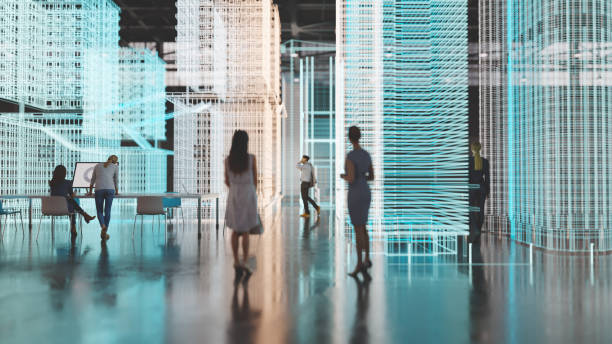Holographic Artistry: Redefining Visual Boundaries
In a world where technology and art increasingly intertwine, holographic artistry emerges as a groundbreaking medium that challenges our perceptions of reality and pushes the boundaries of visual expression. This cutting-edge form of creative expression combines advanced projection techniques, light manipulation, and innovative storytelling to craft immersive, three-dimensional experiences that captivate audiences and redefine the possibilities of visual art. As holographic installations gain prominence in galleries, museums, and public spaces worldwide, they herald a new era of artistic exploration and audience engagement.

From Scientific Tool to Artistic Medium
The transition of holography from a scientific curiosity to a respected artistic medium was gradual but transformative. Early holographic artists faced numerous technical challenges, including the need for specialized equipment and controlled environments. Despite these obstacles, visionaries in the field persevered, recognizing the unique ability of holograms to create illusions of depth, movement, and interactivity that traditional mediums could not achieve.
Technological Advancements Fueling Creativity
Recent years have seen exponential growth in holographic technology, driven by advancements in laser projection, computer-generated imagery, and augmented reality. Modern holographic artists have access to a wide array of tools and techniques that their predecessors could only dream of. These innovations have expanded the scale, complexity, and interactivity of holographic installations, allowing artists to create truly immersive experiences that blur the lines between the physical and digital worlds.
The Multifaceted Nature of Holographic Art
Holographic art encompasses a diverse range of styles and applications. Some artists focus on creating static, three-dimensional images that appear to float in space, inviting viewers to explore them from multiple angles. Others incorporate movement and animation, crafting dynamic scenes that evolve over time. Interactive holographic installations respond to viewer movements or inputs, creating a participatory experience that challenges traditional notions of the relationship between art and audience.
Cultural Impact and Future Prospects
As holographic art gains recognition in the mainstream art world, its influence extends beyond galleries and museums. The technology has found applications in fields such as education, advertising, and entertainment, showcasing its versatility and potential for widespread impact. Holographic performances featuring virtual musicians or historical figures have drawn large audiences, while architectural projections transform buildings into canvases for light-based artworks.
Challenges and Ethical Considerations
Despite its growing popularity, holographic art faces several challenges. The high cost of equipment and technical expertise required can limit accessibility for emerging artists. Additionally, as the technology becomes more sophisticated, questions arise about the authenticity and originality of holographic works, particularly when they involve recreations of deceased performers or historical events. The art world must grapple with these ethical considerations as the medium continues to evolve.
Holographic Art in Public Spaces
One of the most exciting developments in holographic artistry is its increasing presence in public spaces. City squares, parks, and building facades are being transformed into canvases for large-scale holographic installations, bringing art to wider audiences and revitalizing urban environments. These public displays often incorporate elements of local culture and history, creating a sense of place and community engagement that traditional public art forms struggle to match.
The Intersection of Holography and Performance Art
Holographic technology is revolutionizing performance art, allowing for collaborations between live performers and virtual elements. Dancers interact with holographic projections, musicians perform alongside virtual bandmates, and theater productions incorporate holographic set pieces that respond in real-time to the actors’ movements. This fusion of physical and digital performance opens up new avenues for storytelling and artistic expression, challenging performers and audiences alike to reconsider the boundaries of live entertainment.
Educational Potential of Holographic Art
The immersive nature of holographic installations makes them powerful educational tools. Museums and science centers are incorporating holographic displays to bring historical events to life, visualize complex scientific concepts, or offer virtual tours of inaccessible locations. This application of holographic art not only enhances learning experiences but also demonstrates the technology’s potential to bridge gaps between art, science, and education.
The Future of Holographic Artistry
As technology continues to advance, the possibilities for holographic art seem limitless. Researchers are exploring ways to create touchable holograms, further blurring the line between the virtual and physical worlds. The integration of artificial intelligence could lead to holographic installations that adapt and evolve based on viewer interactions, creating truly personalized artistic experiences. As these innovations unfold, holographic artistry stands poised to redefine our understanding of visual art and reshape the cultural landscape for generations to come.





